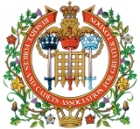1921 was the year when Great Britain turned its attention to how best to remember its War dead.
In towns and villages all over the United Kingdom, memorial committees were formed to decide how best to commemorate the fallen from their local area.
The national tribute was the building of the Cenotaph in Whitehall, designed by Sir Edwin Lutyens, at first a temporary structure of wood and plaster board, later made permanent by public demand.
The Unknown Warrior was brought home to his final resting place in Westminster Abbey. During the earlier stages of his journey one of the pall bearers was an Infantryman from the 21st (County of London) Battalion The London Regiment (Surrey Rifles).
The Capital's own tribute to the units raised within its boundaries was Alfred Drury's impressive London troops memorial that stands outside the Royal Exchange in the City.
In addition, most units set about the task of building their own permanent memorials to their fallen comrades. Such memorials may be found within the Drill Hall itself or, where possible, in the local church or Regimental Chapel or nearby Park.
The register of unit memorials in the following pages is by no means complete. Whilst some have been destroyed by enemy action in WW2, others have simply been lost with the closure of the Drill Hall. However, those that remain carry where applicable the much shorter lists of the units fallen in WW2. Wherever they are sited, they remain a fitting tribute to the sacrifice of the Volunteer Reserve Forces of Greater London.
